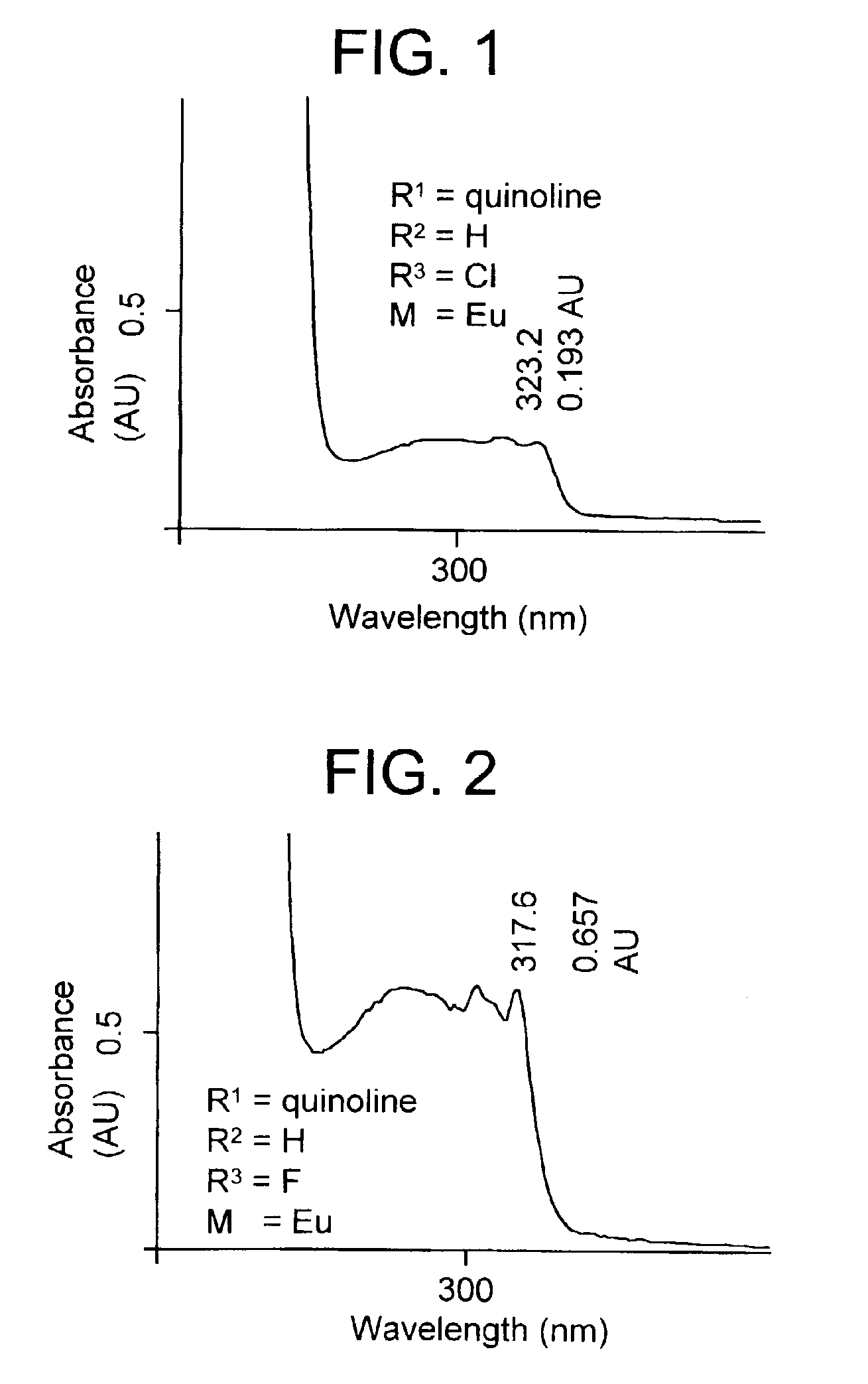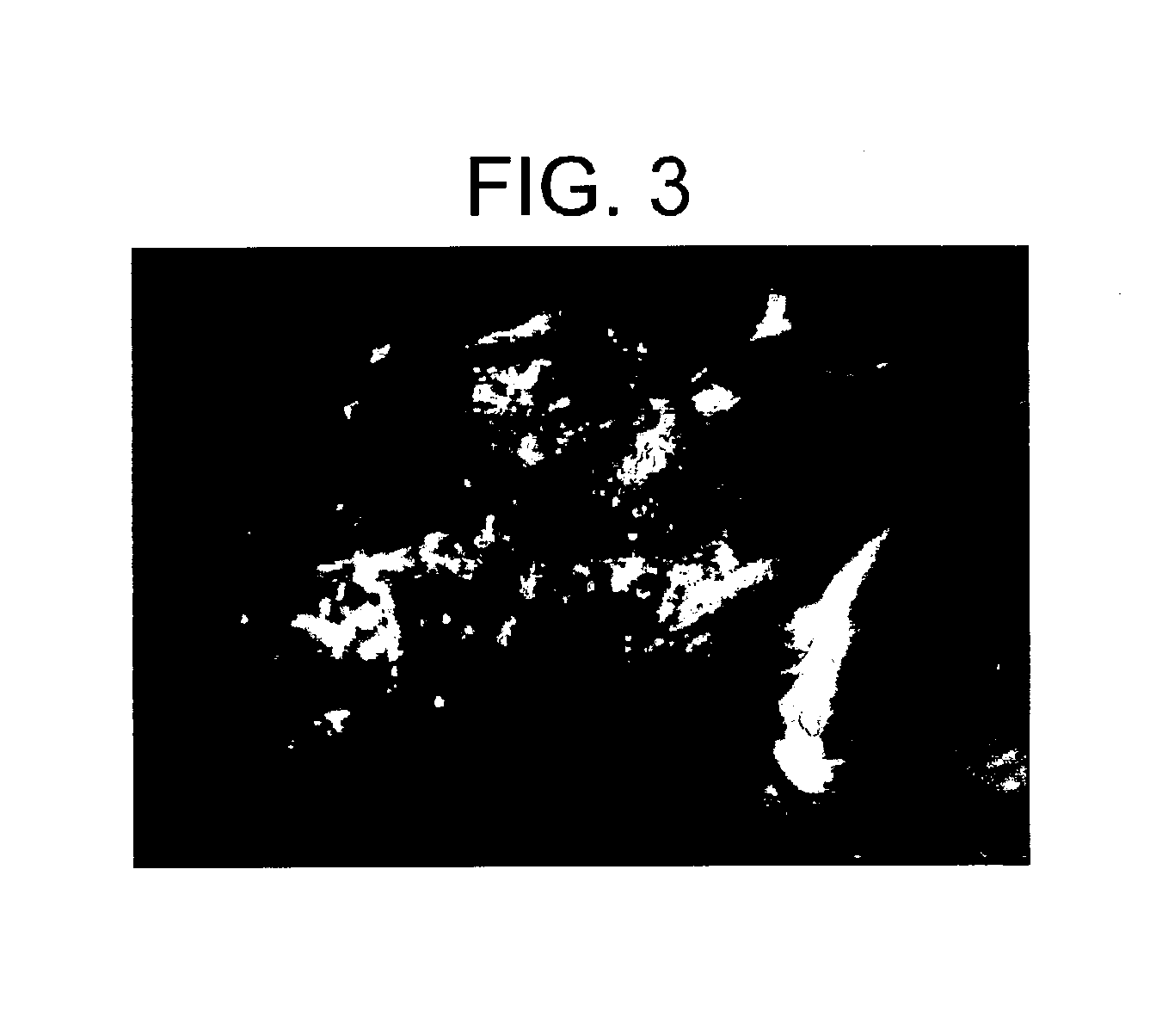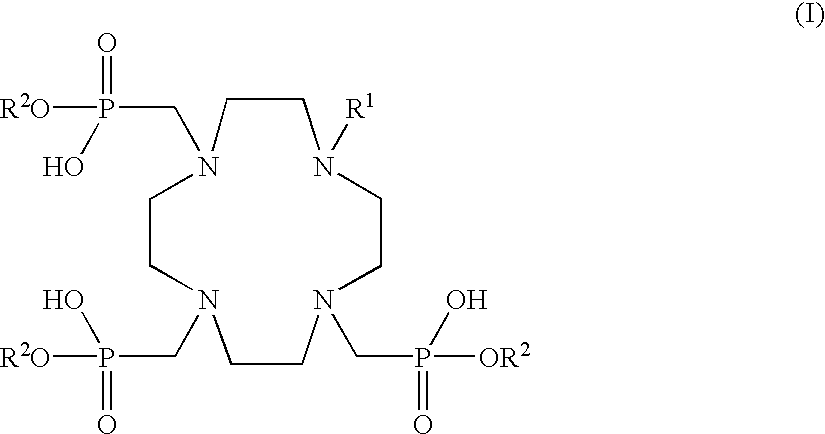Tissue specific fluorescent chelates possessing long wavelength UV excitation
- Summary
- Abstract
- Description
- Claims
- Application Information
AI Technical Summary
Benefits of technology
Problems solved by technology
Method used
Image
Examples
example 1
Synthesis of 2,6-Dimethylquinaldine (1, R3=methyl)
[0068]Paratoluidine (10 g, 0.0933 mol) was dissolved in 100 mL of 6 M HCl and heated to 90° C. with vigorous stirring. Crotonaldehyde (6.62 g, 0.0945 mol) was added dropwise to the mixture over a period of 6 hours, after which the reaction was allowed to stir with heat an additional 2 hours. The completed reaction was allowed to cool to room temperature. ZnCl2 (12.3 g, 0.0933 mol) was then added to the solution, which was stirred vigorously for 30 min. The solution was then cooled to 0° C. and stirred an additional 15 minutes. The precipitate was then vacuum filtered and washed with chilled 3 M HCl. The precipitate was then transferred to a beaker, stirred with isopropanol for 30 minutes, filtered, washed with additional isopropanol, and then finally with chilled ether. The solid was then transferred to a beaker to which 100 mL water was added and then chilled to 0° C. while stirring. 30 mL of NH4OH(aq) was added to the solution and ...
example 2
Synthesis of 2,6-Dimethylquinaldine N-oxide (2, R3=methyl)
[0069]To a stirring solution of 2,6-Dimethylquinaldine (1) (5 g, 0.0318 mol) in 1,2 dichloroethane (130 ml) was added 3-CPBA (3-chloro-peroxybenzoic acid) (7.43 g of 72% activity, 0.0310 mol). The reaction was then heated to 40° C. for 24 hours. The completed reaction mixture was allowed to cool to room temperature, concentrated, and 10% K2CO3 and a minimal amount of ethyl acetate was to produce a two phase mixture. A precipitate then formed in both layers and was filtered, washed with water to remove traces of K2CO3 and dried to afford 4.67 g (85%). H1 NMR (CDCl3): δ 2.52_(s, 3H), 2.66 (s, 3H), 7.28-7.56 (m, 4H), 8.70-8.79 (m, 1H).
example 3
Synthesis of 2-(Chloromethyl)-6-methylquinoline (3, R3=methyl)
[0070]To a stirring solution of p-toluenesulfonyl chloride (6.19 g, 0.0325 mol) in dichloroethane (75 mL) was added 2,6 dimethylquinaldine N-oxide (2) (5 g, 0.0289 mol) under N2. The reaction mixture was then heated to 100° C. for 24 hours, cooled, concentrated and extracted with 10% K2CO3 and ethyl acetate. The organic layer was dried with MgSO4, concentrated and purified on a small silica flash column (2:1 dichloromethane:hexanes). The resulting yellow solid was then recrystallized in hexanes to afford 3.31 g (60%) of a white solid. H1 NMR (CDCl3): δ 2.50 (s, 3H) 4.80 (s, 2H), 7.40-7.50 (m, 2H), 7.58-7.61 (d, 1H), 8.02-8.99 (m, 1H), 8.11-8.14 (d, 1H).
Ligand Synthesis
PUM
 Login to View More
Login to View More Abstract
Description
Claims
Application Information
 Login to View More
Login to View More - R&D
- Intellectual Property
- Life Sciences
- Materials
- Tech Scout
- Unparalleled Data Quality
- Higher Quality Content
- 60% Fewer Hallucinations
Browse by: Latest US Patents, China's latest patents, Technical Efficacy Thesaurus, Application Domain, Technology Topic, Popular Technical Reports.
© 2025 PatSnap. All rights reserved.Legal|Privacy policy|Modern Slavery Act Transparency Statement|Sitemap|About US| Contact US: help@patsnap.com



